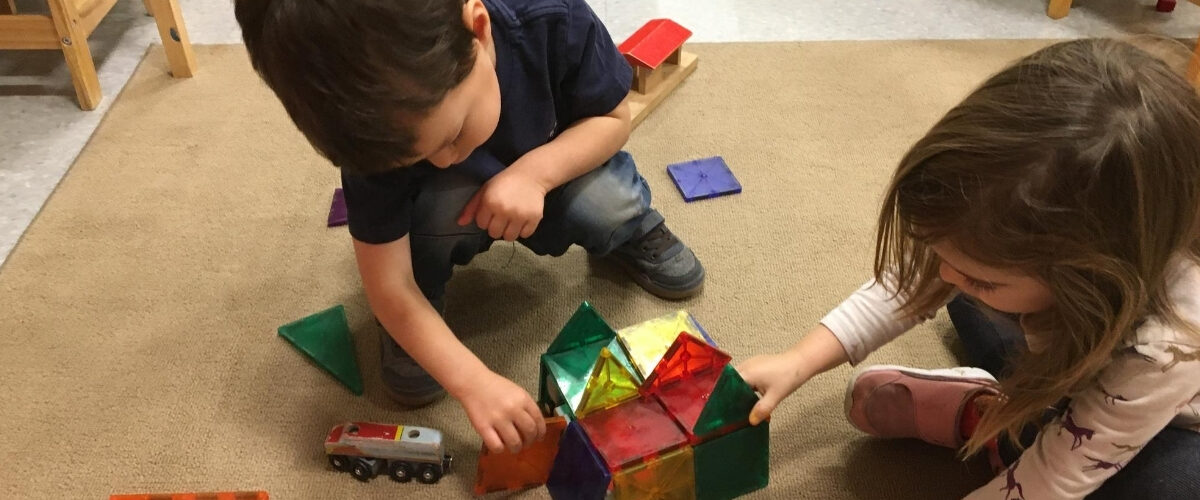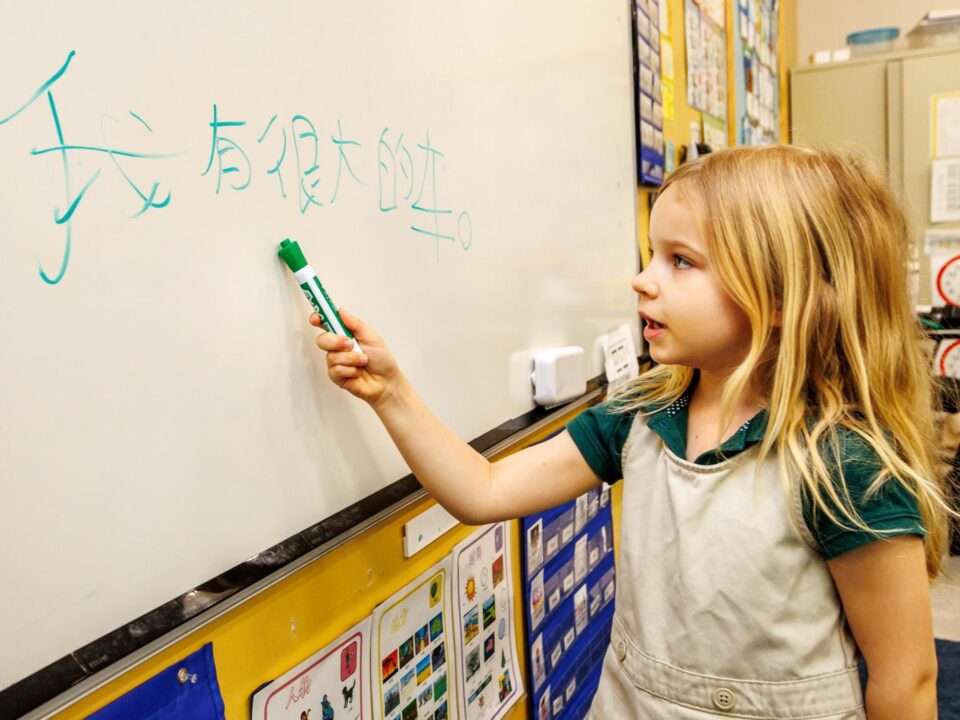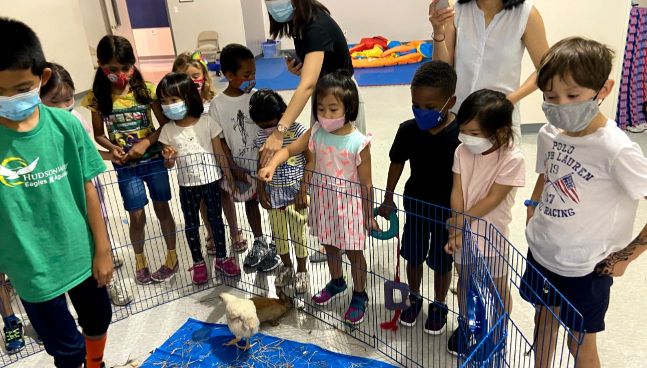
How we successfully integrate students new to immersion in the elementary grades
August 12, 2020
The Theory and Practice of Fostering Critical Thinking in a Language Immersion Environment
August 13, 2020
By Lucy Hao, Master Teacher, Early Childhood
_______________________
For the past two decades, there has been a growth in immersion programs for young preschool students. But what curriculum approach is used by schools? How can the school ensure that it is educating the whole child across many areas – not just in language development? HudsonWay Immersion School faced these questions since it began 15 years ago and for many reasons chose Creative Curriculum®
Creative Curriculum ® fosters the belief that the best way to help children succeed is to teach them to be creative, confident thinkers. That means offering hands-on exploration and discovery that help build lifelong critical-thinking skills and foster confidence.
Here is how it benefits various stakeholders:
Students – Students study a topic, such as “trees”, “balls”, “clothing” in-depth for 6-8 weeks at a time. In this way, vocabulary is introduced and continually spiraled to ensure increasing comprehension. This is especially important in an immersion setting where a teacher needs to repeat concepts in slightly different ways to scaffold learning. The curriculum provides a wide variety of topics to choose from – space, 5 senses, community and gives guidance so that multidisciplinary areas such as language arts, math, and science can be addressed within these topics. The benefit of using this curriculum is that it provides a comprehensive collection of stories, songs, rhymes, and activities which based on research have been found to engage children and develop skill areas without limitation to their abilities.
Teachers – many immersion teachers come from cultures with a different focus and emphasis in early childhood. Having a common framework of 38 objectives across 10 areas of learning ensures that all of our teachers are seeing child development similarly. The 10 areas of learning include: social-emotional, physical, language, cognition, library, mathematics, science/technology, social studies, the arts, English language. To this, in our program, we add Mandarin or Spanish language development for the 11th area of learning. At HWIS, a preschool unit is commonly being explored across all classrooms. In this way, teachers can plan and collaborate across classrooms. Teachers use the Gold Assessment® which provides benchmarks for developmental stage – infancy, toddler, preschooler, kindergarten, 1st and 2nd grade with an explanation of skills that should be mastered at each stage. This is helpful for teachers to plan activities to meet the development. In this way teachers can develop the optimal plan to support the learning of their class in both the target language and the early childhood core skills. The assessment continuum enables teachers to see what skill area is next and continue to challenge students as far as they can go through the early childhood framework.
Parents – the assessment tool provides an objective picture of a child which is helpful in communicating to parents where the child is in the development of each area. This forms the basis for trust and good communication and partnership in working together to address areas of desired improvement and building on strengths.
Early childhood is forming a foundation, much like creating a leak-proof, large bucket. The more solid the construction of the bucket, the more water can be contained. Early childhood represents the construction of the bucket to which elementary learning represented by water, can be added. Without a well-built bucket, elementary learning, or water in this analogy, cannot be contained.





